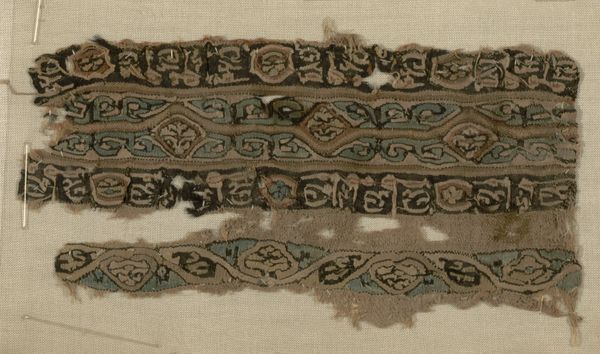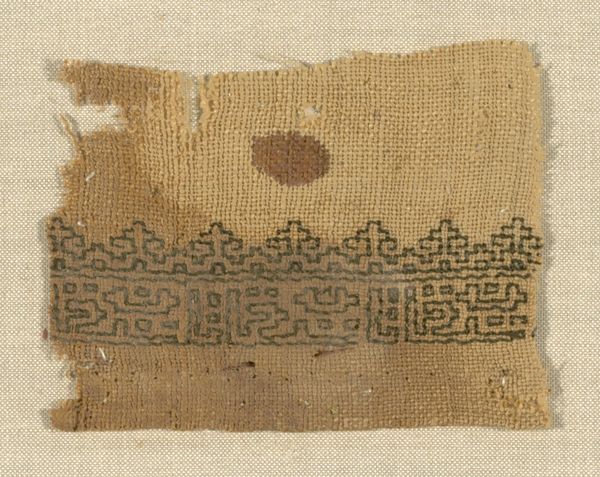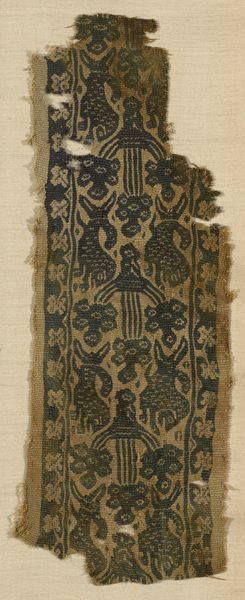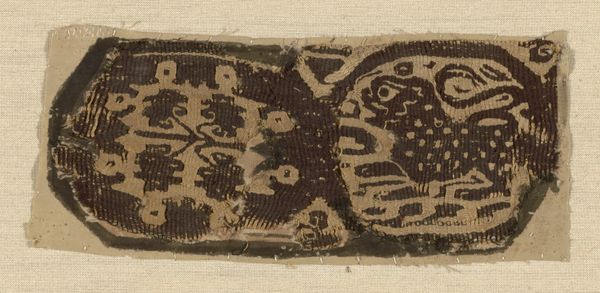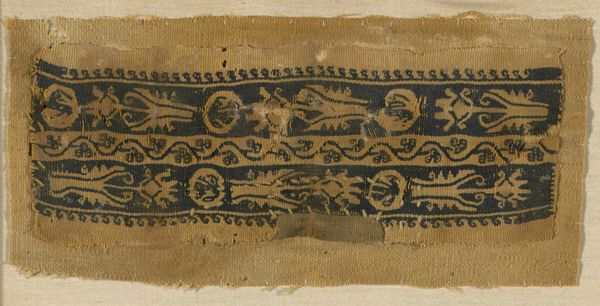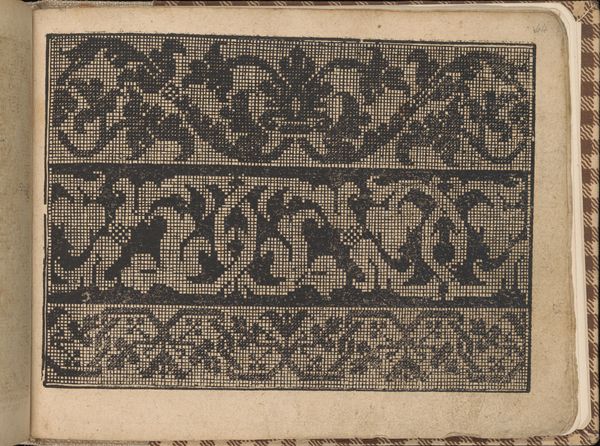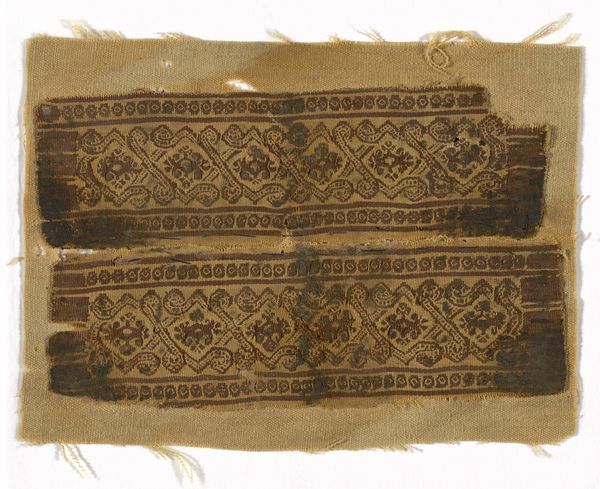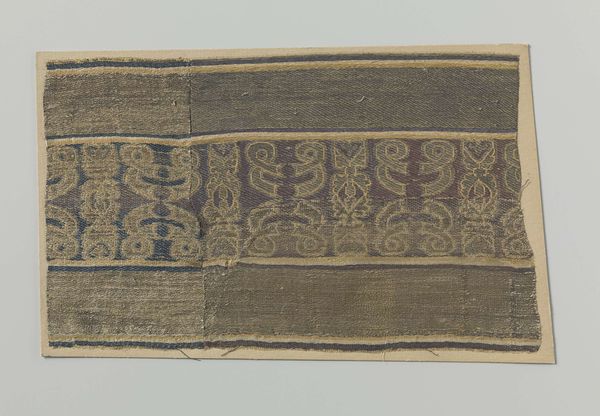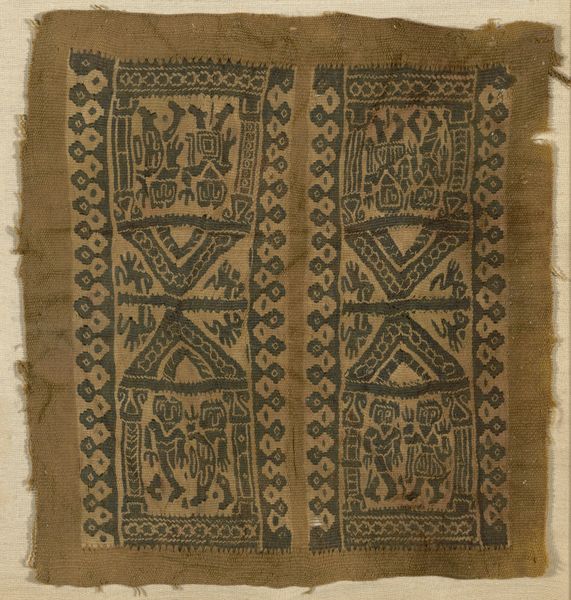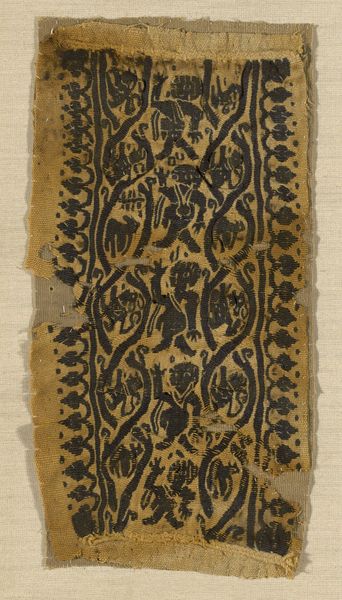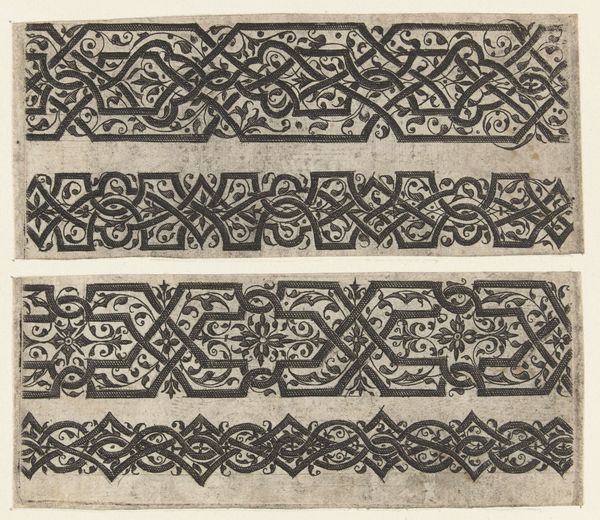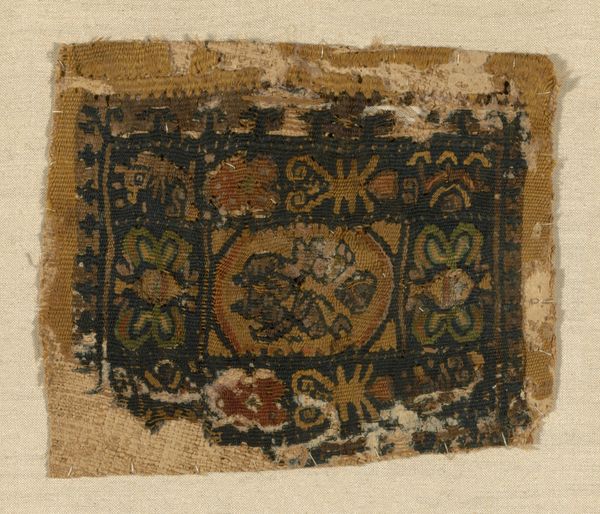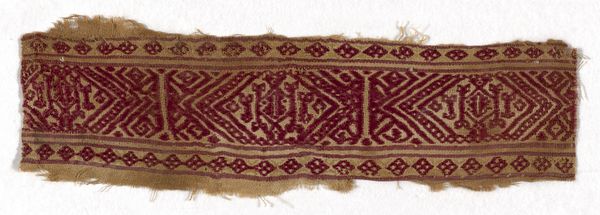
Border Fatimid period (969–1171)/Ayyubid period (1171–1250), 12th century
0:00
0:00
weaving, textile, wool
#
medieval
#
worn
#
sculpture
#
weaving
#
textile
#
wool
#
text
#
egypt
#
line
#
islamic-art
Dimensions: 24.1 × 6.4 cm (9 1/2 × 2 1/2 in.)
Copyright: Public Domain
Editor: This is a woven wool textile, simply titled "Border," from the Fatimid or Ayyubid period in Egypt, so around the 12th century. It has a faded quality to it, like a cherished relic. How should we approach thinking about it? Curator: This fragment offers a lens into the complex cultural landscape of medieval Egypt. The abstraction and geometry you see reflects Islamic artistic traditions, but situated in Egypt, we have to consider the vibrant Coptic Christian community too. Does this textile participate in cultural exchange or function as a marker of religious or social identity? Editor: It seems like an object worn threadbare, literally holding history and potentially negotiating identities. Are there symbolic implications to its function and design? Curator: Absolutely. Textiles, often produced by women, were powerful signifiers of status, piety, and belonging. The very act of weaving becomes a political one, claiming space for marginalized voices. Can we see how the geometric patterns and Kufic script reflect both a spiritual and social order? Editor: Yes, the geometric patterns are not only beautiful but act as boundary, a kind of resistance. But do you think its fragmentary nature alters its significance? Curator: Its incomplete state is crucial. The losses it suffered transform it from an object of utility or status into a poignant testament to the ravages of time and human action. We are invited to reflect on absence, memory, and the narratives that time has eroded, maybe even acts of erasure and silencing. What do you think? Editor: That reframing makes it all the more compelling. I originally saw an old piece of fabric, but now it's like holding a conversation across centuries about culture, identity, and power. Curator: Exactly, and that’s the ongoing work of art history. Seeing these objects as participants in crucial discussions, not simply passive remnants of the past.
Comments
No comments
Be the first to comment and join the conversation on the ultimate creative platform.
